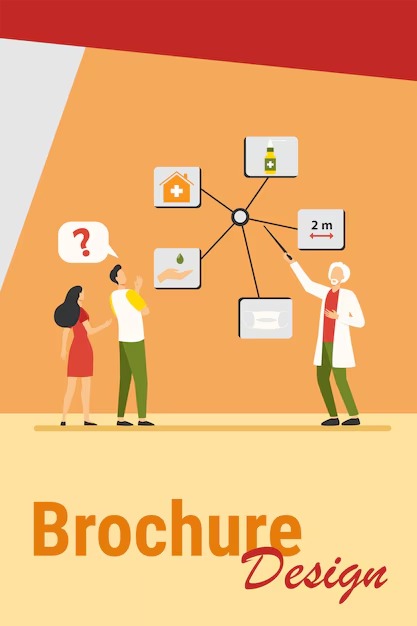Strategies for Way to Build Business Relationship and Maintenance

Strategies for Way to Build Business Relationship and Maintenance
The essence of thriving in any enterprise lies in the quality of connections cultivated over time. Cultivating an environment of trust and cooperation can lead to fruitful collaborations that extend beyond mere transactions. It is within these interactions that opportunities emerge and innovation flourishes, enhancing overall success and satisfaction.
Establishing a solid foundation is crucial, driven by open communication and shared values. Nurturing these connections requires consistent effort and an understanding of the nuances that define each interaction. Individuals within the network must feel valued and acknowledged, fostering loyalty and encouraging deeper engagement.
Investing in these vital links not only strengthens the existing network but also promotes resilience in the face of challenges. The commitment to supporting one another translates into enhanced collaboration, ultimately leading to mutual growth and prosperity. A robust network is a catalyst for creativity, driving all parties towards achieving common objectives while celebrating individual achievements along the way.
Understanding the Importance of Business Relationships
Establishing meaningful connections within the professional realm plays a vital role in the success of any venture. These interactions serve as the foundation for collaboration, trust, and shared goals, ultimately driving productivity and innovation. Nurturing these connections can lead to long-lasting benefits that extend beyond immediate transactions.
The Value of Networking
Expanding networks opens doors to new opportunities, ideas, and resources. Engaging with diverse individuals allows for the exchange of knowledge and experience, fostering an environment where growth can flourish. Effective networking facilitates partnerships that can lead to enhanced visibility and credibility in the marketplace.
Cultivating Trust and Communication
Trust is a cornerstone of any successful interaction. Transparent communication promotes understanding and respect among stakeholders. Strengthening these qualities enables parties to navigate challenges collectively, reinforcing commitments and ensuring that everyone remains aligned towards shared objectives.
Effective Communication Techniques for Networking
Establishing meaningful connections in a professional environment relies heavily on the ability to convey thoughts clearly and engagingly. Employing the right communication strategies can enhance interactions, foster trust, and create opportunities for collaboration. Mastering these techniques can significantly elevate one’s networking efforts.
Active Listening is crucial in any interaction. By focusing on what others say without interrupting, individuals demonstrate respect and genuine interest. This attentiveness not only builds rapport but also facilitates a deeper understanding of others’ perspectives and needs.
Non-verbal Communication plays an equally important role. Body language, eye contact, and facial expressions can convey enthusiasm and openness. Being mindful of these cues can enhance the overall message and leave a positive impression during encounters.
Clarity is vital in conveying messages effectively. Using simple, direct language helps avoid misunderstandings. Tailoring the message to the audience’s knowledge level ensures that information is accessible and engaging, thus fostering a productive dialogue.
Personalization of interactions can significantly strengthen bonds. Remembering names, referencing previous conversations, or acknowledging achievements shows that one values the connection. Such thoughtful gestures foster a sense of belonging and appreciation.
Follow-Up is essential after initial meetings. Sending a brief message to thank the other party or recap key points demonstrates professionalism and keeps the line of communication open. This step can cement the connection and pave the way for future interactions.
Incorporating these approaches into networking efforts creates a solid foundation for fruitful interactions. By focusing on effective communication, individuals can enhance their ability to connect, collaborate, and thrive in their professional journeys.
Building Trust Through Consistent Interactions
The essence of cultivating reliable connections lies in the frequency and quality of exchanges. Regular communication fosters familiarity and confidence, paving the way for a more profound understanding. Over time, these sustained interactions create a solid foundation, enabling parties to navigate complexities with ease.
Key Elements of Effective Communication
- Transparency: Sharing information openly encourages honesty and accountability.
- Reliability: Consistently meeting commitments establishes a reputation for dependability.
- Active Listening: Paying attention and responding thoughtfully demonstrates respect and appreciation.
- Feedback: Providing constructive criticism and recognizing achievements strengthens mutual respect.
Strategies for Consistent Engagement
- Schedule regular check-ins to discuss progress, challenges, and opportunities.
- Utilize multiple communication channels to ensure messages are received and understood.
- Share relevant resources or insights to contribute to ongoing conversations.
- Encourage open dialogue by creating an environment where all voices are heard.
Sustained, meaningful interactions create a culture of trust, allowing for more fruitful collaboration and a deeper bond. By committing to consistent engagement, parties can navigate the complexities of their interactions with greater confidence and success.
Navigating Conflicts to Strengthen Partnerships
Disagreements are an inevitable part of collaborations. While they may initially seem detrimental, they can serve as pivotal moments that, if handled thoughtfully, often lead to deeper understanding and enhanced cooperation. Effectively addressing disputes can ultimately foster a more resilient connection, transforming potential fractures into opportunities for growth and synergy.
Understanding Perspectives
Approaching a dispute requires empathy and an open mind. Listening actively to the opposing viewpoint allows for a more comprehensive understanding of the issue. Engaging in dialogue that emphasizes mutual respect encourages all parties to express their thoughts candidly, creating a foundation for resolution. Sometimes, recognizing the underlying motivations behind each stance can reveal common ground that was previously overlooked.
Fostering Collaborative Solutions
Once both sides have articulated their concerns, the next step lies in exploring joint solutions. Emphasizing cooperation rather than competition can shift the focus toward collective success. Utilizing techniques like brainstorming or mediation can facilitate innovative approaches that satisfy the interests of all involved. By prioritizing collaboration over individual agendas, a sense of partnership is reinforced, ultimately leading to a more resilient connection.
Leveraging Technology for Relationship Management
In today’s interconnected world, effective interaction is enhanced through various digital tools, enabling deeper connections and improved communication. Technology serves as a bridge that fosters collaboration, streamlines processes, and enhances engagement among parties. Utilizing these advancements can lead to more fruitful exchanges and lasting connections.
Customer Relationship Management (CRM) systems exemplify how software can facilitate the organization of contact information and interactions. By consolidating data, entities can gain valuable insights into client preferences and behaviors, tailoring approaches for maximum impact. This personalized touch cultivates loyalty and enhances satisfaction.
Moreover, social media platforms play a pivotal role in fostering informal dialogue and engagement. These channels allow for real-time updates and feedback, creating opportunities for organizations to address concerns promptly and reinforce connections. Regular interaction through these platforms can significantly strengthen community ties and reputation.
Furthermore, automation tools contribute to maintaining consistent communication. Scheduled emails, reminders, and automated follow-ups ensure that no critical moments are overlooked. This proactive approach not only demonstrates commitment but also facilitates ongoing dialogues that keep parties engaged.
Incorporating analytics and data-driven strategies empowers organizations to refine their outreach efforts. By assessing metrics related to interactions, organizations can identify strengths and areas for improvement, allowing for a more strategic focus on engagement initiatives.
Measuring the Success of Your Connections
Evaluating the effectiveness of professional contacts is essential for lasting engagement. Understanding the impact of interactions can guide individuals toward improving their networking approach and fostering valuable rapport. Approaches to assessment vary, yet they all share the goal of determining the health and productivity of each connection.
Key Performance Indicators
Identifying relevant metrics is critical for assessing networking accomplishments. Elements such as response rates, referral frequency, and the quality of engagements serve as indicators of how well connections are thriving. Regular feedback and open communication can also provide deeper insights into the nature of interactions, allowing for adjustments where necessary.
Long-Term Impact
Beyond immediate metrics, it’s vital to consider the lasting effects of connections. Establishing a network based on mutual trust and respect leads to opportunities for collaboration and innovation. Successful connections should ultimately contribute to personal growth and organizational success, reflecting a healthy ecosystem of support and shared goals.
Q&A: Building and maintaining business relationships
How can I effectively use LinkedIn to build relationships in my industry?
To effectively use LinkedIn to build relationships in your industry, start by optimizing your profile with a professional photo and a compelling summary. Engage with industry-related content by liking, commenting, and sharing posts. Join relevant groups to connect with like-minded professionals and participate in discussions. Sending personalized connection requests can also help establish meaningful relationships.
What strategies can I implement on LinkedIn to promote my product or service?
To promote your product or service on LinkedIn, create informative posts that highlight its benefits and use cases. Share success stories or testimonials from satisfied clients to build credibility. Utilize LinkedIn’s advertising options to target specific audiences. Additionally, consider hosting webinars or live sessions to showcase your product or service in action.
How important is networking on LinkedIn when trying to build relationships?
Networking on LinkedIn is crucial for building relationships as it allows you to connect with professionals in your field, share insights, and collaborate on projects. By actively engaging with others, you can expand your reach and create valuable connections that may lead to new opportunities.
What type of content should I share on LinkedIn to engage potential clients for my product or service?
To engage potential clients for your product or service on LinkedIn, share content that educates and informs. This could include industry news, tips, case studies, and how-to guides. Visual content, such as infographics or videos demonstrating your product or service, can also capture attention and encourage engagement.
How can I measure the effectiveness of my LinkedIn efforts in building relationships?
You can measure the effectiveness of your LinkedIn efforts in building relationships by tracking metrics such as connection requests accepted, engagement rates on your posts, and the number of conversations initiated. Additionally, monitor any leads or referrals generated through your networking activities to evaluate the impact on your business.
What role do recommendations play in building relationships on LinkedIn?
Recommendations play a significant role in building relationships on LinkedIn as they serve as social proof of your skills and expertise. When others endorse your work, it enhances your credibility and can attract potential clients or partners who are looking for trustworthy professionals to collaborate with.
How can I leverage LinkedIn groups to build relationships related to my product or service?
Leveraging LinkedIn groups can help you build relationships by allowing you to connect with individuals who share similar interests in your product or service. Participate actively in discussions, provide valuable insights, and answer questions. This not only positions you as an expert but also fosters connections with potential clients and collaborators.
What are some common mistakes to avoid when trying to build relationships on LinkedIn?
Common mistakes to avoid when trying to build relationships on LinkedIn include sending generic connection requests without personalization, neglecting to engage with others’ content, and being overly promotional about your product or service. Instead, focus on building genuine connections and providing value to your network.
How often should I post content on LinkedIn to effectively build relationships?
To effectively build relationships on LinkedIn, aim to post content at least once a week. Consistency is key; regular updates keep you visible in your network’s feed. However, prioritize quality over quantity—ensure that each post adds value and encourages engagement from your audience.
What are the benefits of using LinkedIn for building relationships compared to other social media platforms?
The benefits of using LinkedIn for building relationships compared to other social media platforms include its professional focus, which attracts a business-oriented audience. LinkedIn provides tools specifically designed for networking, such as endorsements and recommendations. Additionally, it offers a platform for sharing industry insights and connecting directly with decision-makers in various fields.
What are some effective tips for building strong business relationships in today’s digital age?
Some effective tips for building strong business relationships include actively engaging on platforms like LinkedIn, attending networking events, and consistently providing value to your business contacts. Additionally, maintaining clear expectations and staying informed about industry trends can enhance your professional relationships.
How can business owners create strong relationships with prospective clients?
Business owners can create strong relationships with prospective clients by understanding their needs and showing that you value their input. This involves asking for feedback and providing relevant content that addresses their concerns, which ultimately helps in building trust and credibility.
What types of business relationships are essential for business success?
Essential types of business relationships for success include client relationships, partnerships with other businesses, and connections with industry professionals. Each of these relationships plays a crucial role in expanding your business network and opening doors to new business opportunities.
How do good business relationships contribute to long-lasting business success?
Good business relationships contribute to long-lasting business success by fostering trust and collaboration. When you build strong relationships with clients and partners, it leads to more productive business interactions and creates a foundation for future growth.
What are the best practices for maintaining strong relationships with customers?
Best practices for maintaining strong relationships with customers include regular communication, asking for constructive feedback, and providing ongoing support. Keeping in touch through email marketing or personalized messages can also help reinforce positive relationships.
How can professionals in your industry build strong connections at networking events?
Professionals in your industry can build strong connections at networking events by being approachable, sharing helpful advice, and actively listening to others. Bringing business cards and following up with new contacts afterward can go a long way in solidifying these relationships.
What role does thought leadership play in building strong relationships in the world of business?
Thought leadership plays a significant role in building strong relationships by establishing trust and credibility. When you share valuable insights and expertise, you position yourself as a knowledgeable resource, attracting other professionals who seek collaboration opportunities.
How can asking for feedback help you maintain effective business relationships?
Asking for feedback helps you maintain effective business relationships by demonstrating that you value your clients’ opinions. This two-way street approach fosters open communication, allowing you to adjust your services based on their needs and expectations.
What are 10 tips for building better relationships with business partners?
Ten tips for building better relationships with business partners include: 1) Communicate openly; 2) Set clear expectations; 3) Share goals; 4) Provide constructive feedback; 5) Celebrate milestones together; 6) Stay informed about each other’s businesses; 7) Offer support during challenges; 8) Connect regularly; 9) Show appreciation; 10) Collaborate on projects that add value.
How can small businesses leverage digital marketing to strengthen their client relationships?
Small businesses can leverage digital marketing to strengthen client relationships by providing relevant content that resonates with their audience. Utilizing email marketing campaigns to keep clients informed and engaged can help maintain strong relationships while showcasing the value of their products or services.

